Meet the Beauty Brands Making Products More Accessible to Those With Disabilities
Beauty experts and disability advocates are creating adaptive makeup and tools that address the needs of these largely underserved consumers.
How inclusive is the beauty industry? While "diversity" has become a buzzword in the past few years with many brands making strides to ensure their products are suitable for all gender identities, skin tones and body types, this conversation has largely overlooked the needs of the disabled community. Considering one in four adults in the U.S. has some type of disability, this is a huge oversight (not to mention a massive missed business opportunity). Now, a new crop of companies backed by beauty experts and disability advocates are making adaptive makeup and tools that address the needs of these largely underserved consumers.
The first issue with traditional beauty options is the usability of the products themselves.
"Depending on your vision, mobility and dexterity, many of us in the disability community need help with things like makeup or our personal care routines. This is simply because the products have not been made with us in mind," explains Xian Horn, a disability advocate who herself has Cerebral Palsy. (She's also the founder of Give Beauty Wings, a non-profit that runs self-esteem courses for those from marginalized communities.)
"Most of us need help to even engage with makeup or cleanser. Overwhelmingly, beauty and care products and packaging are not simple enough for us to use ourselves. If you're leaving it to a personal care assistant or family member to help you, you may have less choice — especially if they have other ideas or are in a rush," she adds.
"Often the disability is in the design, not the person," Terri Bryant, a celebrity makeup artist and founder of accessible makeup brand Guide Beauty, concurs. After 25 years working in the beauty industry, Bryant was diagnosed with Parkinson's, which left her with dexterity issues that impacted her ability to apply makeup at a professional level. "Makeup techniques I could once execute with little to no effort felt foreign and strained. I began to rethink makeup and how we apply it in terms of how we design it," she recalls.
This experience led Bryant to create Guide Beauty, which also counts Selma Blair (who was diagnosed with Multiple Sclerosis in 2018) as its chief creative officer. The brand is one of a handful of emerging companies pioneering the concept of universal design in the beauty space.
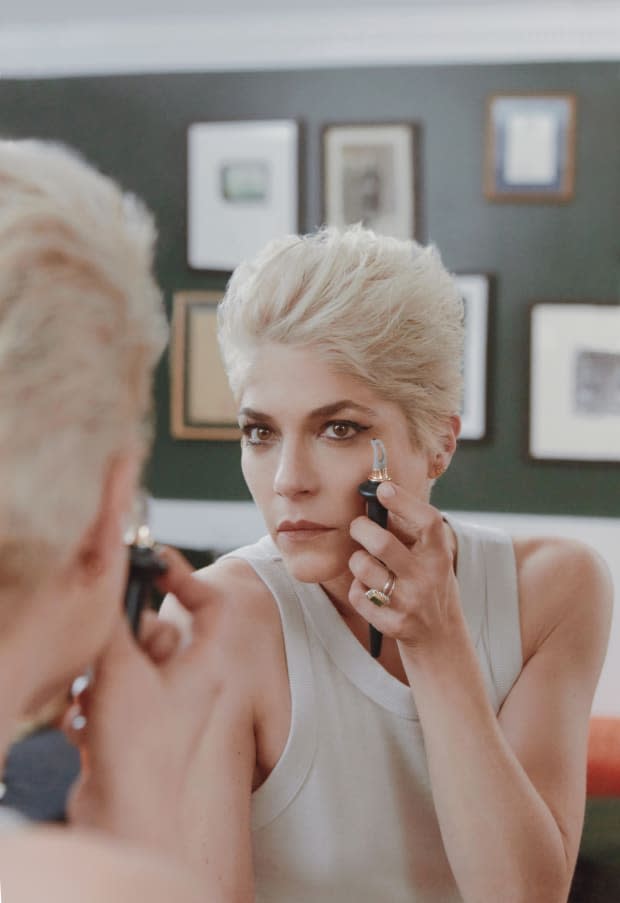
Photo: Courtesy of Guide Beauty
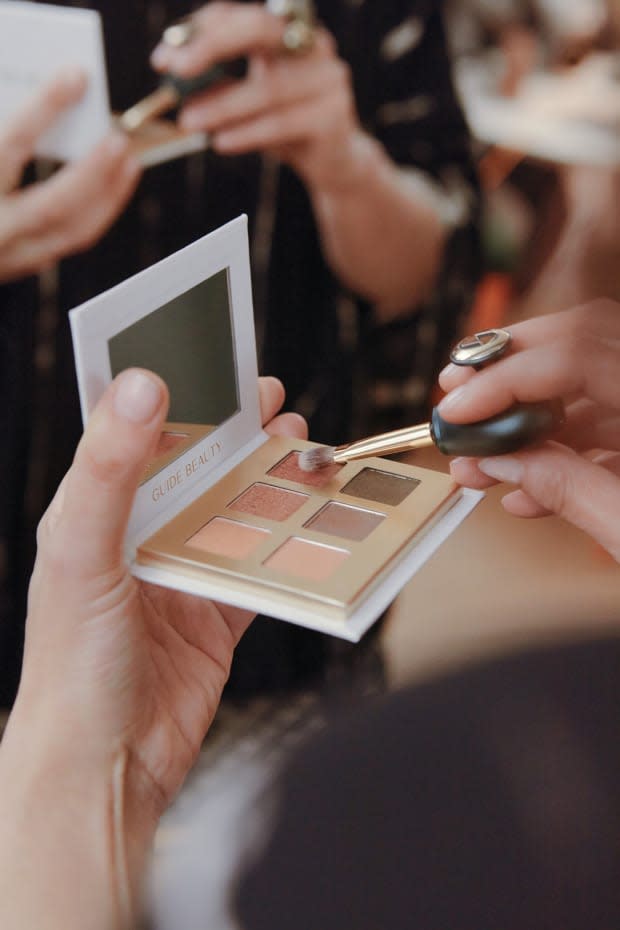
Photo: Courtesy of Guide Beauty
This means products are made to specific design principles that ensure they can be used by anyone, regardless of their physical ability. For example, the Guide Wand, a liquid eyeliner applicator, has a soft, flexible precision-tip applicator and an easy-to-hold handle that steadies the hand.
"When product design fails us, we often blame ourselves. I want to help change that narrative," says Bryant. "I fell in love with makeup artistry as an art form that celebrates what makes each individual face so special and unique; it only makes sense for products to be designed with that spirit in mind."
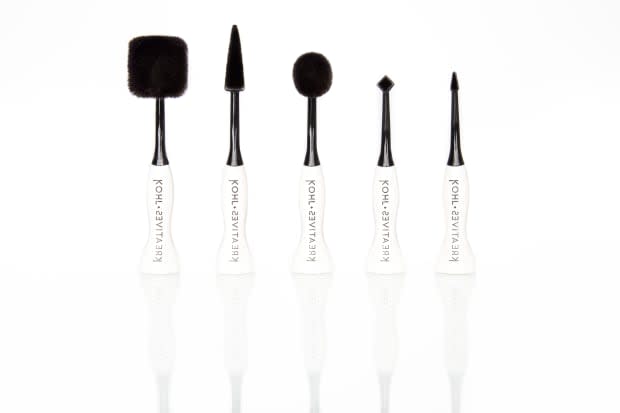
Photo: Courtesy of Kohl Kreatives
Kohl Kreatives is another makeup brand innovating in this space, designing brushes for those with disabilities. Feast Your Eyes is a six-piece eye brush kit with a non-rolling cuboid handle for those with visual impairments, while The Flex Collection is a five-piece set that bends all the way forwards and backwards to make application easier for those with motor disabilities.
"This isn't a niche or a tick box, it's not just marketing. In reality, it's just the way things should have always been," says Kohl Kreatives founder Trishna Daswaney.
A portion of the brand's proceeds also goes to Kohl Kares, a charity initiative that offers free makeup workshops. "Our workshops are integral in not only supporting the community, but also seeing and understanding what the attendees struggle with and how we can fill that gap," Daswaney explains. The workshops cater to those with disabilities, as well as trans individuals looking to brush up on makeup skills, those undergoing chemotherapy, and people with existing conditions like trichotillomania, alopecia, vitiligo and port wine birthmarks.
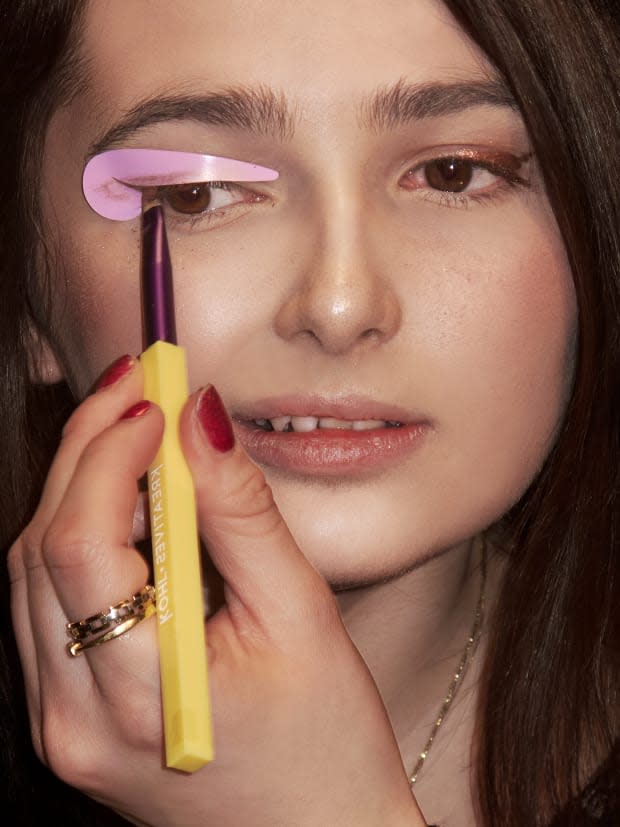
Photo: Courtesy of Kohl Kreatives
While emerging indie brands are working to shift the narrative and expand options for those with disabilities, there's still plenty of work to be done across the beauty industry as a whole, from product development to marketing. Some major mainstream brands have started to become more inclusive in this regard — or at least become more keen to project a sense of inclusivity in their campaign imagery.
Jillian Mercado, a model with muscular dystrophy who uses a wheelchair, has worked with Olay, Diesel and Beyoncé. British model Ellie Goldstein, who has Down Syndrome, has appeared in campaigns for Gucci and Nike, after having been scouted by Vogue Italia.
While the idea that you can't be what you can't see holds weight, it can still feel like these casting decisions are tokenistic and performative. "I'd like to see disability inclusion as standard in ads. It's not that revolutionary but I want it to become a norm and so commonplace that we expect it rather than it being a pleasant surprise," says Horn.
Considering the varied needs of the disabled community, products and their packaging need to be improved across the board to make them truly accessible. Some brands, like Bioderma, Pharrell's Humanrace, L'Occitane, Herbal Essences and Dr. Jart, have begun adding Braille to their packaging. As it can be practically difficult to fit the Braille, innovations such as universal symbols — Too Faced has recognizable shapes on the sides of products — and raised QR codes that link to audio can prove innovative solutions.
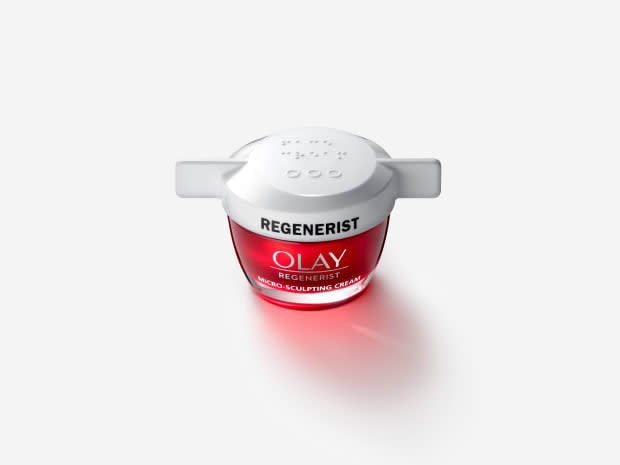
Photo: Courtesy of Olay
Other promising options are coming to the fore, too. Last year, Olay launched an easy open lid for those with dexterity challenges. Available across the brand's most popular skin-care products, the new lid features raised wings to help with grip, a high-contrast product label and Braille text.
L'Oréal is also making advances in this space: In January, the company introduced two new tech-led products aimed at accessibility. HAPTA is a handheld computerized makeup applicator for those with limited mobility, while the L'Oréal Brow Magic applicator is the first hand-held electronic brow applicator. This type of progress and investment in this space is promising — and also makes good business sense. (The total disposable income of consumers with disabilities tops $8 trillion per year in the U.S. alone, according to Accenture's 2018 study.)
Of course, there remains a long way to go in the adaptive beauty space. "We still need to engrain this into the industry," says Bryant. "We need to continue the discussion regarding inclusion and have our design processes reflect the results of that discussion. Most importantly, we need to value the voices of our consumers so we can create products and communities that represent us all."
Want the latest fashion industry news first? Sign up for our daily newsletter.

